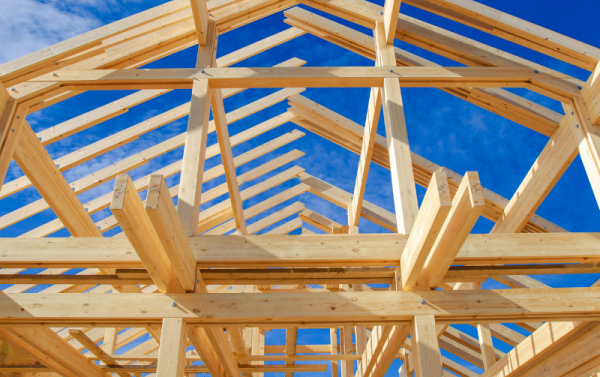Custom Build vs Self-Build
Self-build is a hands-on business. Many who take this approach will find a plot, seek planning permission and handle the finances. They can be involved as much or as little as they want in the actual build, but have overall design approval.
According to the Self Build Portal from the National Custom Self Build Association (NaCSBA), self-build encompasses projects where someone “directly organises the design and construction of their new home. This covers quite a wide range of projects. The most obvious example is a traditional ‘DIY self-build’ home, where the self builder selects the design they want and then does much of the actual construction work themselves.”
Alternatively, a self-builder could arrange for an architect/contractor to design and build their home for them or organise for a kit home company to build the property for them.
Building your own property in the ‘traditional’ sense means you could build a truly sustainable and efficient home to realise your dream living space. In addition, you’d be building at cost rather than contributing to the profit margin of a developer-built house (it is estimated that the cost of a self-build property is 20-40% lower).
For some, self-building in the ‘traditional’ sense can be an overwhelming process but there are alternatives like custom building.
Custom builds are self-build homes but they start with access to a serviced plot which is arranged by a custom build developer. You would normally work with a developer if you choose the custom build route, which means they would provide the serviced plot, organise planning permission, utility connections and essentially manage the whole project around your budget. You may decide to work with the developer to design and build your home. Alternatively, you may just want to be involved in the design of your new home, and leave the developer to build it for you to a fixed budget or timescale. The choice is yours.
On a custom build site you might be free to build anything, or it may require you to build to a set design, which you can customise. On some sites outline planning permission is obtained, and on others detailed planning permission is in place.
According to Duncan Hayes, a NaCSBA spokesperson, custom building is on the rise. “We’re seeing an increase in this type of building but mostly because it happens on multi-plot sites – and these hold the key to future growth for the sector as they bring on so many more opportunities. This means building on developments with like-minded-people, which has the benefit of building community before you’ve even moved in.
He adds: “Multi-plot sites bring prices down – although prices do vary extensively – and give more people access to a home tailored to their needs. Custom build in this light is less about building a Grand Designs palace, but rather about enabling people to build a home that reflects their needs – democratising the process of self building. This might include a home office, a studio, accessible living or double living spaces for multi-generational living – either with parents or children that never fly the coop. It’s also got huge potential for downsizers wanting less bedrooms but still a generous living space, as the older homes market is massively underserved in the UK.
“It’s about giving people choice and control over how they live, rather than presenting them with a vision created by a developer that knows nothing about their life, but still insists that its vision of a house is what they must buy. Unfortunately, people do buy these homes that don’t suit their lives because there is so little choice in the new homes market. NaCSBA campaigns to change this – giving more people the right to choose how they live."
So, how do you choose which route to follow?
The two routes vary in design, project management and planning characteristics. Which one you go for is entirely up to you, and largely depends on how much time you want to commit to being on-site and your capability.
If custom build seems like the route for you, Duncan suggests: “Write out a list of what it is you want from a home – chances are that your list can be fully met on most custom build sites. Once you’re clear about what you want, your budget and how much time you can dedicate to the project you’ll have a clearer idea of your objectives. Then identify a custom build site and talk to the enabler, facilitator or developer who is bringing the site on.
“Each custom build site is unique, and planning means you are almost never ‘free’ to build what you want, regardless of whether you are self or custom building, so be open to discussion and be prepared to compromise.”
The traditional self-build route
Why do it?
- You can get exactly what you want as long as it’s all approved by your planning officers.
- You are closer to the tiniest of details so you get to know the intricacies of how your house has been built.
What are the challenges?
- It is, without doubt, a challenging and sometimes stressful process. As the project manager you have to be on site every day for a long period of time and this can be hard if you are juggling a full-time job, too.
- Self-build is a complex process and you have to be prepared to take on the responsibility of getting sign-off on planning and all of the administration involved. Navigating your way through this all requires persistence and patience.
The custom build route
Why do it?
- Custom build makes it easier to commission a home and gives people choice in the housing market.
- It’s a less risky option – some of the headache is reduced as you don’t need to apply for planning permission or arrange for services to the site. You have more support available from the developer on the serviced plot.
What are the challenges?
- Custom build does involve building and living in a community, which may not be for everyone.
- It can sometimes work out more expensive than the ‘traditional’ self build route but this can vary.
Find more advice in NaCSBA’s Self Build Portal.





